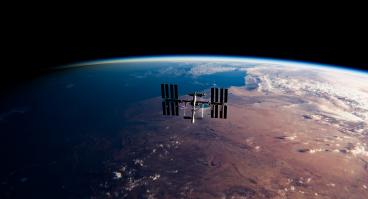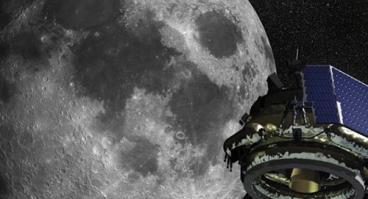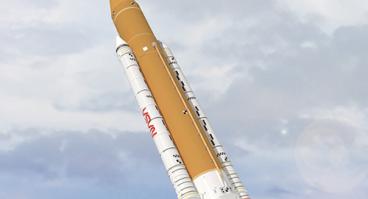Why NASA Should Change Its Present Course

Table of Contents
Author(s)
George W.S. Abbey
Former Senior FellowShare this Publication
- Download PDF
- Print This Publication
- Cite This Publication Copy Citation
Abbey, George W.S. 2016. Why NASA Should Change Its Present Course. Policy Brief: Recommendations for the New Administration. Rice University’s Baker Institute for Public Policy, Houston, Texas.
Introduction
Human spaceflight and the U.S. civil space program are both well past their half-century anniversary. Yet for over five years and counting, the nation has not had the capability to launch humans into space. The space shuttle, the most advanced and capable spacecraft ever built, was arbitrarily retired in July 2011. Rather than continue to fly in space, U.S. shuttles now adorn museums across the country. The only U.S. human presence in space today is onboard the international space station (ISS).
The ISS has proven to be an outstanding research facility and a model for international cooperation. America relies on Russia, an outstanding ISS partner, for flying U.S. astronauts to and from the station. The cost to the U.S. of such flights is a bargain, contrary to the comments of some observers. Russia provides not only flights to and from the station, but also a rescue vehicle that is attached to the ISS that can safely return astronauts to Earth in an emergency. America has no capability to accomplish either of these required functions.
Without the space shuttle, carrying cargo to and from the ISS has become a problem. Russia has an unmanned vehicle that can carry limited cargo loads to the space station, but it has no capability to return cargo. Contractors SpaceX and Orbital ATK can provide logistical support for the ISS to a limited degree, but only SpaceX can return cargo.
Looking ahead, the space station will play a critical role in helping to provide the answers that will enable long-duration human spaceflight. Every effort should be made to maximize research that will support this long-term goal on board the station.
Current NASA Projects
NASA is developing two major projects, the Space Launch System (SLS) and the Orion Multi-Purpose Crew Vehicle. The initial version of the SLS is designed to lift a 70 metric ton payload to low Earth orbit (LEO); another SLS version is planned to have an LEO capability of more than 130 metric tons, as directed by Congress. Yet to be defined are missions that utilize the larger specified lift requirement. The Orion spacecraft is larger than the Apollo spacecraft that carried astronauts to the moon. NASA is developing Orion, and funding the development by private industry of two additional capsules that will transport astronauts to the ISS.
Orion and the SLS have had a significant impact on NASA’s budget, and the agency has very little money left over to use for actual exploration. During a joint SenateNASA presentation in September 2011, NASA stated that the projected development cost for the SLS project was $18 billion through 2017, which included $10 billion for the SLS rocket, $6 billion for Orion, and $2 billion for upgrades to the launch pad and other facilities at Kennedy Space Center. A subsequent independent cost assessment report considered the projected costs and schedules to be optimistic. Production and operation costs for the SLS and Orion presently consume more than $3 billion annually. Two recent General Accountability Office (GAO) reports contain warnings about the costs and schedules for the SLS and Orion, and for Exploration Ground Systems (EGS). These three elements constitute the major components of NASA’s Exploration Systems Development Program. The GAO believes the projected costs for the SLS and EGS are too low, and raises concerns about the feasibility of a November 2018 first launch of the SLS. The GAO also states that cost and schedule estimates for Orion have failed to meet more than half of the best practices for creating such estimates, thus making them suspect.
Three competing heavy-lift rockets in the same class as the SLS are under development in the private sector. SpaceX is developing the Falcon heavy booster and Blue Origin is developing the new Glenn booster. United Launch Alliance, a joint venture of Lockheed and Boeing, is developing the Vulcan rocket, with an upper stage being optimized for use between Earth and the moon. These are all expected to cost significantly less to fly than the SLS.
Recommendations
NASA’s annual budget is substantial and its effectiveness is a function of how the funds are spent. The next logical step for extending a human presence beyond Earth orbit is a return to the moon. Mars is a “bridge too far,” with many unresolved technical issues. A mission to the moon, only three days from Earth, provides the opportunity to not only develop needed experience but also to resolve technical issues and prove and qualify the needed systems for a voyage to Mars. The world’s spacefaring nations, with the exception of the U.S., all support a return to the moon; such an effort would provide an excellent opportunity for the U.S. to continue the outstanding international cooperation demonstrated so clearly by the ISS.
The present NASA budget, if properly spent, could support a return to the moon. This would necessitate a reassessment of the need for a NASA SLS—as opposed to using launch vehicles developed by industry—and the viability and usefulness of a NASA Orion spacecraft to support human spaceflight. The construction and assembly of the ISS has proven the value and usefulness of a large structure in space. Neither the Orion nor the two capsules being funded by NASA to carry crews to the ISS have any capability to support the assembly of large structures in space, such as the ISS. A shuttle-type reusable spacecraft developed by Boeing that has successfully flown several times in space—a scaled-up X-37—could not only accomplish missions envisioned for the NASA-funded capsules, but could also provide a capability to do assembly in orbit. And the assembly of new, large structures in Earth orbit could well contribute to the optimum architecture for human missions beyond Earth orbit.
NASA’s current plan speaks of human flight to Mars but lacks any description of the architecture, spacecraft, or systems needed to achieve this goal—and more importantly, it fails to project the cost of such a voyage.
As the National Research Council’s congressionally chartered Committee on Human Spaceflight once wrote, for NASA “to continue on the present course … is to invite failure, disillusionment, and the loss of the longstanding international perception that human spaceflight is something the United States does best.” The committee made this comment in a June 2014 report. In the years since, NASA has nevertheless continued on the same course. As a new administration takes office, a critical reassessment of NASA’s current programs and future is essential to ensure the nation’s continued leadership role in human spaceflight.
This material may be quoted or reproduced without prior permission, provided appropriate credit is given to the author and Rice University’s Baker Institute for Public Policy. The views expressed herein are those of the individual author(s), and do not necessarily represent the views of Rice University’s Baker Institute for Public Policy.


